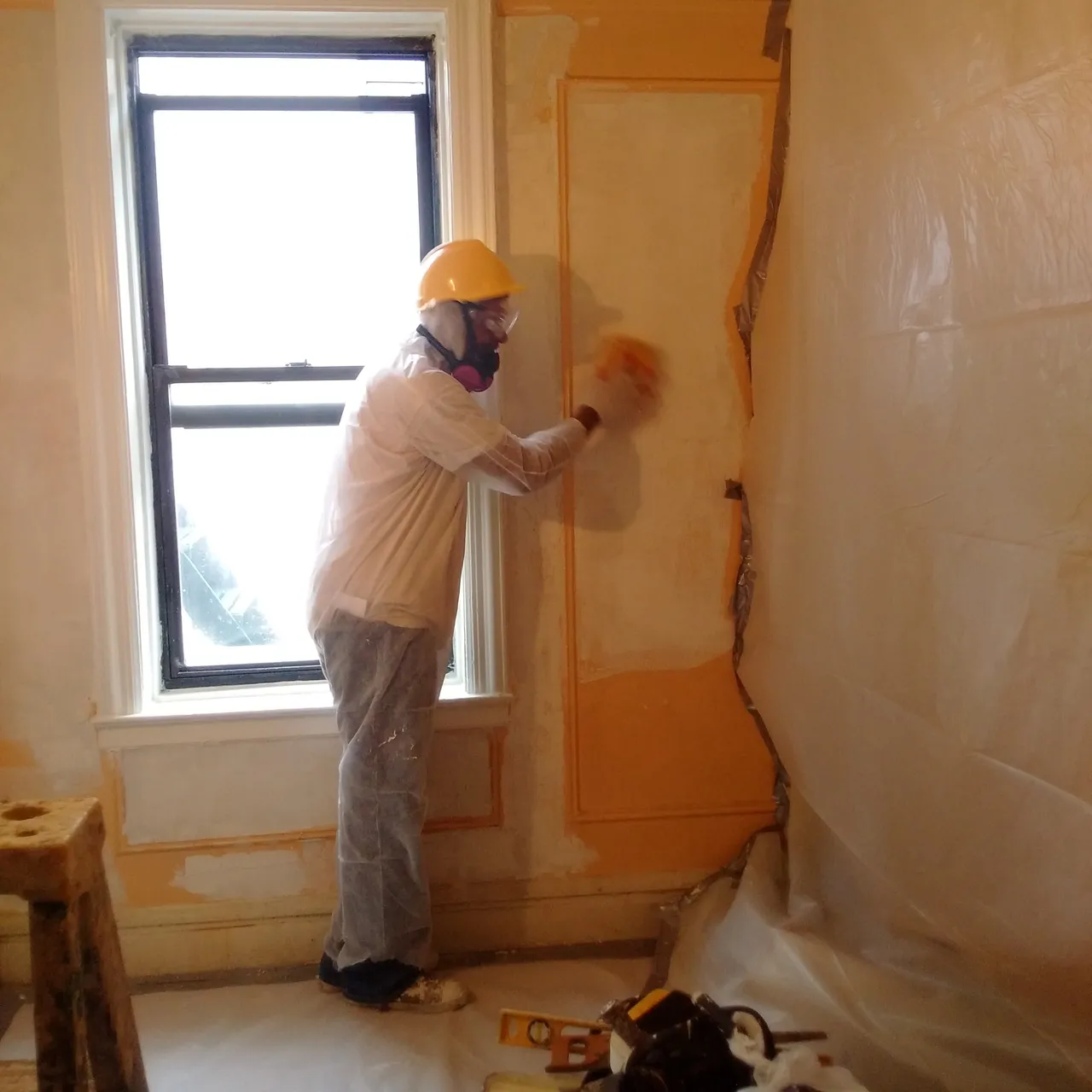Professional Lead Paint Removal Company-- Offering All NYC Boroughs
Professional Lead Paint Removal Company-- Offering All NYC Boroughs
Blog Article
Comprehensive Guide on Effective Lead Infraction Removal Strategies
In the world of environmental security, dealing with lead violations demands a careful and structured approach. This thorough overview begins by highlighting the critical first actions of identifying lead hazards with innovative evaluation and screening methods. The guide elaborates on the significance of adhering to rigid security methods during the elimination procedure, including the usage of appropriate PPE and separating affected locations.
Recognizing Lead Threats
Identifying lead dangers is an important very first step in mitigating the threats connected with lead exposure. Lead, a harmful steel, can be existing in different environmental mediums, including paint, dirt, water, and dust.
The initial phase in recognizing lead hazards includes understanding typical lead sources within the developed environment. Frameworks developed prior to 1978 are especially at risk because of the prevalent use of lead-based paint during that period. Furthermore, dirt contamination can take place from deteriorating exterior paint, industrial exhausts, or historical use leaded gas.
Another considerable resource is lead piping and pipes fixtures, which can seep introduce alcohol consumption water. Customer items such as playthings, porcelains, and imported products may additionally have hazardous lead degrees. Significantly, occupational settings and leisure activities involving lead can track pollutants into homes.
Analysis and Screening
When addressing lead dangers, efficient assessment and testing are extremely important. First analysis usually involves a visual assessment to recognize potential lead resources, such as weakening paint or polluted dust.

Dust clean tasting is another critical strategy, particularly in household setups. By gathering examples from floors, windowsills, and various other surface areas, this technique offers understandings into potential direct exposure risks. Furthermore, soil testing around structure borders is essential to identify lead contamination that could present risks, specifically to kids.
Safe Elimination Treatments
Upon finishing detailed analysis and screening, executing safe removal procedures is the next essential stage in dealing with lead hazards. This procedure guarantees that lead-contaminated materials are properly and securely eradicated, reducing danger to both workers and residents. The initial step includes isolating the affected location making use of plastic sheet and appropriate sealing methods to avoid the spread of lead dust.
Employees have to don appropriate individual protective tools (PPE), including respirators, gloves, and disposable coveralls, to alleviate direct exposure. Using specialized devices and wet methods, such as damp sanding or utilizing HEPA-filtered vacuum cleaners, minimizes the dispersion of lead fragments. It is essential to prevent completely dry fining sand or rough blasting, as these approaches can produce damaging lead dirt.
Garbage disposal is an additional essential component; all contaminated materials need to be securely nabbed and identified according to EPA and local policies. Additionally, complete cleansing of the work area with HEPA vacuum cleaners and wet cleaning makes certain the removal of residual lead particles.
Post-Removal Confirmation

Confirmation of successful lead elimination, referred to as post-removal verification, is imperative to make certain the safety and security and habitability of the remediated location. This procedure involves a series of meticulous analyses and examinations created to identify any type of residual lead particles that might present health risks. The preliminary step commonly consists of an aesthetic inspection to evaluate the completion and quality of the remediation job. This evaluation makes certain that all known sources of lead have actually been addressed and that no noticeable indicators of contamination stay.
Complying with the visual examination, environmental sampling is carried out. This involves collecting dirt, soil, and in some cases water examples from the remediated location. Accredited laboratories examine these examples to measure lead degrees, ensuring they fall below the safety limits developed by regulative bodies such as the pop over to this site Environmental Defense Company (EPA)
In enhancement, air quality testing may be carried out to detect airborne lead fragments, especially in situations where considerable lead-based paint removal or renovation has actually occurred. The results of these tests give quantitative more information data verifying that the lead levels are within permitted limits.
Ultimately, post-removal verification works as an important checkpoint, verifying the efficiency of the lead abatement efforts and safeguarding the wellness of owners and site visitors.
Precautionary Steps and Maintenance

A vital preventative procedure includes using lead-safe certified professionals for any renovation, repair, or paint activities. These specialists are learnt methods that minimize lead dirt and debris. Additionally, keeping colored surfaces to prevent chipping or peeling off is vital, as deteriorating paint can launch lead bits right into the atmosphere.
Educational campaigns targeting residential or commercial property proprietors and occupants concerning the threats of lead and the value of reporting any prospective threats can additionally enhance preventative efforts. i loved this Regular cleaning using HEPA vacuums and wet mopping methods can substantially decrease lead dirt accumulation.
Final Thought
In recap, effective lead offense removal necessitates a thorough method including thorough evaluation, exact screening, and rigid elimination treatments. Ensuring safety through proper isolation and personal protective equipment continues to be vital. Post-removal confirmation by means of ecological tasting and air high quality testing validates compliance with recognized safety standards. Ongoing evaluations and upkeep are crucial to reduce future lead hazards, therefore protecting public health and making certain sustained conformity with regulative needs.
Report this page